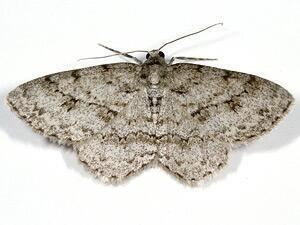Subphylum Hexapoda Family Geometridae Rank Species | Higher classification Ectropis | |
 | ||
Similar Ectropis, Butterflies and moths, Willow beauty, Geometer moth, Common white wave | ||
The Engrailed and Small Engrailed (Ectropis crepuscularia) are moths of the family Geometridae. It is found from the British Isles through Central and Eastern Europe to the Russian Far East and Kazakhstan. The Western Mediterranean and Asia minor and the Caucasus represents the southern limit of the distribution (with the Balkan countries). In the North the distribution area ends at the Arctic circle. It also occurs in North America. There is a debate as to whether they make up one species, or whether E. crepuscularia actually refers only to the Small Engrailed, with the Engrailed proper being separable as E. bistortata.
Contents
The ground colour of the wings is buff or grey variably marked with darker fascia and a pale postdiscal crossline. The darker markings are not usually as strong as in the rather similar Willow Beauty. Melanic forms occur fairly frequently. The wingspan is 38–45 mm. One or two broods are produced each year. In the British Isles the adults can be seen at any time between March and August; this time range may vary in other parts of this moth's range. The species flies at night and is attracted to light.
The greyish caterpillar is truly polyphagous, feeding on a huge range of plants (see list below). The species overwinters as a pupa.
Engrailed/Small Engrailed
There is debate as to whether the Small Engrailed (Ectropis crepuscularia) and Engrailed (Ectropis bistortata) are the same species, despite DNA profiling confirming they are conspecific.
